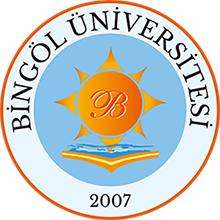SARI ALIÇ TOHUMLARINDAN MANYETİK AKTİF KARBON ÜRETİMİ VE KATYONİK BOYA ADSORPSİYONU PERFORMANSININ İNCELENMESİ
Özet
ÖZET
Atık sulardaki boyaların varlığı, birçok yaşam formunu olumsuz etkiler. Boyaların çevreye boşaltımı hem toksikolojik hem de estetik nedenlerden ötürü can sıkıcıdır. Aktif karbon, biochar, karbonhidrat nano borucukları ve grafen gibi karbonlu materyaller, su veya atık sudaki kirleticileri uzaklaştırmak için yaygın olarak kullanılır. Manyetik aktif karbon, yüksek yüzey alanı, manyetik özelliğe nedeniyle en çok kullanılan adsorbanlardan biridir.
Bu tez çalışmasında tek adımlı bir sentez teknolojisi denemiştir. Düşük değerlikte (Sarı alıç tohumu) tarımsal atık kullanılarak kimyasal ve fiziksel aktivasyon metotlarının birleştirilmesiyle yüksek kaliteli Manyetik aktif karbon (MAK) üretildi. Aktive edici ajan olarak FeCl3 ve CO2 kullanıldı. Elde edilen MAK'lar, katyonik boyar maddenin sudan uzaklaştırması için yüksek adsorpsiyon kapasitesine ve manyetik alan tarafından kolay geri kazanıma sahip oldu. Elde edilen manyetik aktif karbonun parçacık boyutu, yüzey, gözenek ve manyetik özellikleri SEM, FTIR, BET ve titreşimli örnek manyometre gibi değişik spektroskopik tekniklerle incelendi. Adsorpsiyon için uygun koşulu belirlemek için başlangıç boyar madde miktarı ve pH gibi farklı parametrelerin etkileri araştırıldı. Ek olarak, katyonik boyar maddenin MAK üzerindeki adsorpsiyon mekanizması hakkında kapsamlı bilgi elde etmek için kinetik, izoterm ve termodinamik çalışmalar yapıldı. ABSTRACT
The presence of dyes in wastewater adversely affects many life forms. Discharging of dyes to the environment is annoying for both toxicological and aesthetic reasons. Carbonaceous materials such as activated carbon, biochar, carbohydrate nanotubes, and graphene are commonly used to remove contaminants from water or wastewater. Magnetically active carbon is one of the most used adsorbents due to its high surface area and magnetic property.
In this thesis, a one-step synthesis technology was tried. High quality magnetically activated carbon (MAC) was be produced by combining chemical and physical activation methods using low value (Yellow hawthorn seed) agricultural waste. FeCl3 and CO2 was used as the activating agent. The MACs to be obtained had high adsorption capacity and easy recovery by the magnetic field to remove cationic dyestuff from water. The particle size, surface, pore and magnetic properties of the magnetic activated carbon to be obtained was investigated by various spectroscopic techniques such as SEM, FTIR, BET and vibrating sample magnometer. The effects of different parameters such as initial amount of dyestuff and pH was investigated to determine the appropriate condition for adsorption. In addition, kinetic, isotherm and thermodynamic studies was carried out to obtain comprehensive information about the adsorption mechanism of cationic dyes on MAC.
Koleksiyonlar
- Kimya [59]

DSpace@BİNGÖL by Bingöl University Institutional Repository is licensed under a Creative Commons Attribution-NonCommercial-NoDerivs 4.0 Unported License..













